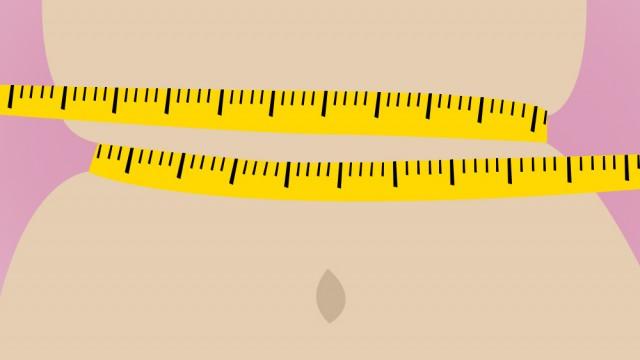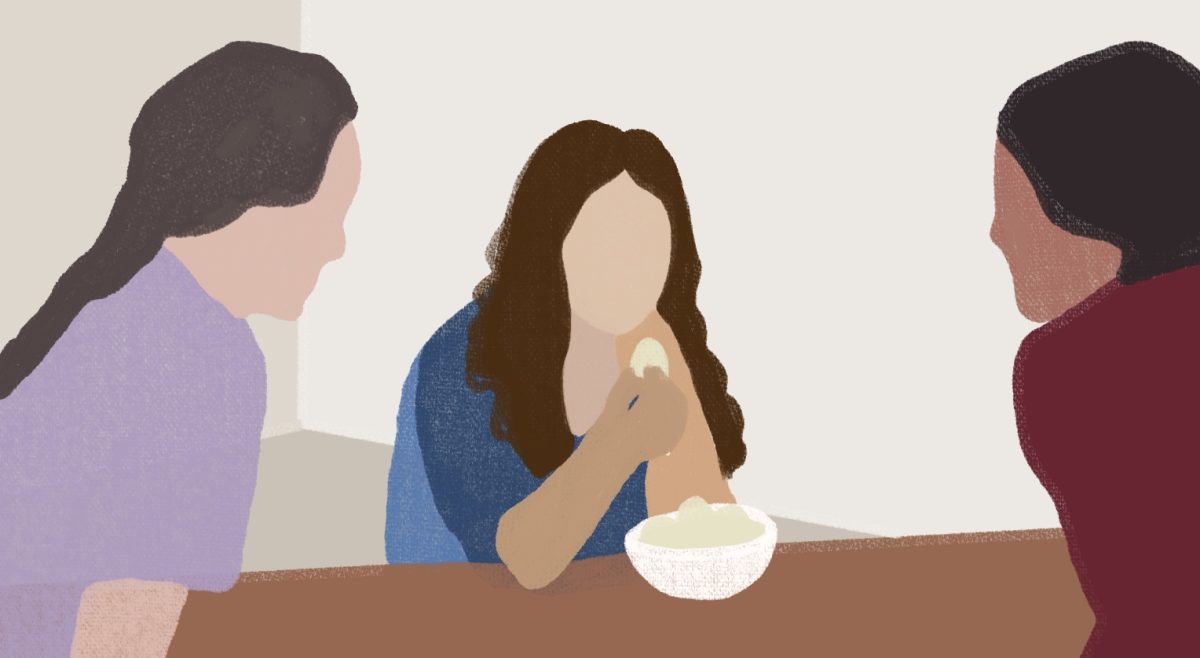At some point, we have all heard the Romantic trope that “beauty is in the eye of the beholder.” The Ancient Greeks and Classical world, however, would disagree with this subjective construct of aesthetics. In fact, architects, philosophers, mathematicians, and artists have, for millennia, played with the “golden ratio” as a mark of beauty. This ratio (roughly 1.618) considers proportions in our faces and bodies as ways to indicate what is aesthetically pleasing. The golden ratio exists between the nose and the mouth, the waist and the shoulders, and many other places. The Ancients applied a fairly objective standard as to what is considered beautiful.
Modern societies have largely departed from this objective standard. It seems like today, virtually everything is considered “beautiful” in some way. The political correctness machine’s enforcement of positive body image is primarily responsible for this.
Certainly, positive body image in theory is not a bad thing by any means, and in fact something for which every individual should strive, but modern rhetoric within the movement succumbs to many problematic assumptions.
The primary notion behind the positive body image campaign is one of autonomy: we must own our appearance as it has been endowed to us by the powers that be. Acceptance is a viable psychological mechanism to employ for things that cannot be changed despite our utmost volition. The state of our bodies is dynamic—it can be changed. Just as we should allow for the ability to grow and mature intellectually, we must allow for changes in our physiognomy. This is all assuming, of course, that a person does not suffer from a health complication that makes it difficult to lose or gain weight, or otherwise live a healthy lifestyle (such as a thyroid condition that often leads to such a restriction).
The argument can then be made that there is no need to conform to normative standards of beauty, and that we can be empowered by self-acceptance alone. This is also problematic because it often encourages people to subordinate the relative importance of physical appearance within the graduated hierarchy of societal imperatives. We can harp on how “evil” society is for being superficial. We can criticize ad campaigns and the media for sexualizing our world. Ultimately though, the physical appearance that we project is exceedingly important for our success and livelihood in today’s culture. In fact, a recent U.S. News and World Report study explains that attractiveness can lead to higher salaries and confers other financial advantages. Although personal value should be determined by more substantive attributes, such as intellect and ambition, dismissing the fact that appearances matter is caustic to our success potential.
The movement often encourages poor dietary and health habits as well. Too much self-acceptance can encourage laziness and complacency. Much of positive body image rhetoric has become militant and inflammatory. One article in which a woman recounts her negative experience with dieting urges her readers: “Try this at home: Be fat and happy. Be unapologetically fat. Wear a bikini, and mean it. Eat pizza and ice cream and enjoy it.”
The sentiment expressed here and elsewhere is one of reckless abandon that encourages a lack of dietary restriction and standard healthy living. The psychology underlying it is bothersome: it tells us that just because something is difficult, we should avoid it. If life teaches us anything, it is that difficult and challenging things are those that are most worthwhile. Complacency is caustic. Similar rhetoric adopts a state of siege mentality that often propagates the problem of attacking people based on physical appearance by condemning physically attractive people as “too skinny,” and similar sentiments.
An offshoot of the positive body image campaign is the commercialization of “plus sized models”—women who are often more generously proportioned than their more standard model counterparts who sport an hourglass figure and thin waist—a way to show that beautiful women can be found in places other than the annual Sports Illustrated Bikini Shoot. The most notable plus sized model today is likely Tess Munster, who has gained popularity in the last year. In an interview, she is described as “happy and liberated” as well as essentially the essence of female empowerment. The forceful phrase “skinniness is not happiness” is scattered throughout the prose.
This is where the line must be drawn. Appealing to science, we must consider Ms. Munster’s measurements: she stands five feet, five inches tall and weighs 260 pounds. This gives her a Body Mass Index (BMI) calculation of roughly 43.3. For reference, normal weight yields a BMI range of about 19 to 24 and obesity anything over 30. By any medical standard, this woman is morbidly obese. The quality of her health is such that her lifespan will most definitely be truncated as a result of her size. Yet this woman is constantly praised and lauded as a representation of female empowerment and as a pioneer in breaking the mold of normative beauty standards.
The most perverse and scary notion is that young girls struggling with body image issues will not only view Munster’s physical precedent as acceptable, but actually something for which they should strive.
This sends the completely wrong message and has negative implications for health standards here in the United States as we progress into the future.
Ultimately, notwithstanding medical issues, everyone should maintain healthy diets and lifestyles. The sentiments expressed by much of positive body image rhetoric are dangerous because they serve to allow for rationalization from a psychological standpoint and they encourage unhealthy lifestyle habits.
Featured Image by Breck Wills / Heights Graphics
Alis Dicpinigaitis is an op-ed writer for The Heights.














Jason • Feb 27, 2015 at 12:36 am
As a young male with a high metabolism, it was really easy
for me to read your article, Alis, and agree with everything that you said.
However, my perspective is a very unique and lucky perspective. I’m guessing
that you are lucky enough to come from a similar vantage point on the
situation. While I agree that healthy living and a healthy lifestyle is
important, it’s easy to ignore those who don’t have enough money or time in
their daily lives to buy and fully use a gym membership and to eat healthier on
a daily basis. While it might not apply to everyone, especially not most
students here at BC, some people have no access to a gym in the winter, and if
they did have access, they’re schedules are full with multiple jobs and child
rearing. While that is one subset of the population that you could also lump
with those who are medically unable to be healthier, even those like Munster
haven’t had the same opportunities and genetic luck as you. While you (and I)
may have been incredibly lucky to want to be motivated into a healthy lifestyle
for the variety of reasons that you listed, Munster probably never received the
same attention to health as our parents instilled in us. And even if she did
have a motivation to be thinner and healthier, Munster’s metabolism and other
aspects of her body just don’t function the same as your body or my body
functions. My final point to open the argument a little bit is to really
emphasis a healthy lifestyle because too often the road to a healthy lifestyle
leads to something dangerous, like an eating disorder. Overall it was an
excellently written article, and I look forward to reading more!
Michelle Peffen • Feb 26, 2015 at 3:33 pm
Alis writes
that our bodies can be changed but I do not agree with this! Our weight can
change but not our body shape. Someone who has an hour glass figure will have
an hour glass figure whether they are a little bit bigger or a little bit
smaller. Our bodies change with respect to our weight but not with respect to
how our bones are structured. Also, self-acceptance is presented in a negative
light in this article which is extremely upsetting. When someone has
self-acceptance they are confident in themselves, their looks, and their
abilities. That does not mean that they stop taking care of themselves. People
don’t say “I love my body, now I’m going to eat a bunch of junk food.” People
still take care of their bodies and eat healthily when they are comfortable in
their own skin. When Alis mentions Tess
Munster, I became outraged. This woman may have a higher BMI but she is
still beautiful. She does not need to be 100lbs to be considered pretty! Not to
mention that BMI is a horrible measure for fitness. People with a lot of muscle
rather than fat score high on the BMI chart because all that is taken into
account is height and weight. Muscle naturally weighs more than fat leading to
bad results. Positive body images encourage people, women especially, to be
confident. It does not encourage them to be inactive and eat bad foods.
Everyone struggles with some part of their body but in no way is thinking
positively something that encourages people to be even more unhealthy. I would
consider a lot of ‘normal’ sized models unhealthy. Alis, would you consider
them healthy? They are skinny and have a very small amount of fat on their
bodies. Is this a good thing? Is that what we should strive for instead? No one
is perfect but people should be confident in their bodies. No one should say
that self-acceptance is a bad thing.
Liz Calderone • Feb 26, 2015 at 2:17 pm
I understand your message and see the problematic nature of
phrases such as “Try this at home: Be fat and happy. Be unapologetically fat.
Wear a bikini, and mean it. Eat pizza and ice cream and enjoy it.”
However, I also want to highlight the reason why positive body image is readily
encouraged. In the 21st century many people, women especially, have
a difficult time seeing images of physical perfection because it is oftentimes
unrealistic. This had led to countless eating and psychological disorders because
of obsessions to be thin. In recent years, there seems to be more of a push to
counteract the emotional struggles that many teens and pre-teens go through.
I can completely acknowledge the double-edged sword that this focus on happiness
gives to females. Yes, there is an aspect which is empowering and helps their
self-esteem, however there could be a bit of complacency as your article
describes. However, I think that rather than denounce the movement of being
happy in your own skin, we should instead hone in on exactly what type of
healthy message we want to send to young teenage girls.
The focus should be that they should be happy with what they see in the mirror. Their
beauty is in the eyes of their beholder—themselves. Additionally, I do agree
with you that doctors then should be more vocal in expressing what people can
do to be healthy and live better lifestyles for themselves. The two points,
being confidently happy and being healthy, should be connected yet dealt with separately.